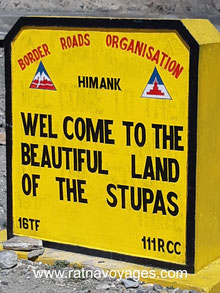KORZOK MONASTERY, TSOMORIRI LAKE, LADAKH

|
NAME/NOM/ NAME/NOME |
KORZOK GOMPA THUPTAN DRUPGRUD STANCHOSLING |
|
|
LOCATION/LIEU/ ORT/LUOGO |
Lake Tsomoriri, Changthang Region, 220Km from Leh |
|
|
|
||
|
LINEAGE/TRADITION/ SCHULE/ORDINE |
Drukpa | |
|
|
||
|
FOUNDED/FONDÉ/ GEGRÜNDET/FONDATO |
17th Century | |
|
|
||
|
FOUNDER/FONDATEUR/ GRÜNDER/FONDATORE |
Rupshu Goba | |
|
|
||
|
PROTECTOR/PROTECTEUR/ SCHIRMHERR/PROTETTORE |
||
|
|
||
|
SPIRITUAL HEAD/ MAÎTRE SPIRITUEL/ GEISTIGES OBERHAUPT/ CAPO SPIRITUALE |
HH 12 Gyal Drukpa Rinpoche | |
|
BRANCH/AFFILIÉ/ ZWEIG/AFFILIATO |
Branch of Hemis Monastery | |
| FESTIVAL | Gustor | |
| FESTIVAL 2024 | July 08-09, 2024 |
Korzok Monastery - Religious Significance
Location: Korzok Monastery is situated on the northern bank of Tsomoriri Lake in the Changthang region of Ladakh.
Korzok Monastery - Religious Significance
Like many monasteries in Ladakh, Korzok Monastery is associated with Tibetan Buddhism, specifically the Gelugpa (Yellow Hat) sect. It serves as a spiritual center for the local community, providing religious teachings and hosting ceremonies.
Korzok Monastery - Cultural Heritage
The monastery likely holds cultural treasures such as ancient scriptures, Thangka paintings, and ritual artifacts. These contribute to the preservation of Ladakhi cultural heritage.
Korzok Monastery - Festivals
Monasteries in Ladakh celebrate various festivals, and Korzok Monastery is no exception. The annual Korzok Gustor Festival is a major event, featuring religious performances, mask dances, and rituals.
Tsomoriri Lake in Ladakh: A Majestic High-Altitude Gem
Nestled in the trans-Himalayan region of Ladakh, Tsomoriri Lake stands as one of the highest altitude lakes in the world, situated at an elevation of approximately 4,595 meters (15,075 feet) above sea level. Also known as Lake Moriri or Mountain Lake, this pristine body of water is surrounded by barren mountains, offering an ethereal and secluded landscape.
Tsomoriri Lake - Scenic Beauty
The lake is known for its stunning natural beauty, surrounded by barren mountains and offering a serene environment. The Changthang Wildlife Sanctuary encompasses the lake, providing a habitat for various species of flora and fauna.
Tsomoriri Lake - Geographical Significance
Tsomoriri Lake is situated in the Changthang Plateau, an extensive high-altitude plateau that extends into Tibet. This region is characterized by its stark beauty, arid landscapes, and an average elevation exceeding 4,500 meters. Tsomoriri is one of the several lakes in Changthang, with Pangong Lake being another notable one.
Tsomoriri Lake - Size and Dimensions
The lake spans an impressive area of about 120 square kilometers, making it the largest lake in Ladakh. Its maximum length is approximately 19 kilometers, and it reaches a width of around 3 to 5 kilometers. The depth varies, with some areas plunging to depths beyond 40 meters.
Tsomoriri Lake - Flora and Fauna
Despite the harsh climate, Tsomoriri Lake supports a surprising variety of wildlife. The wetlands around the lake serve as an essential habitat for numerous migratory bird species. Birdwatchers can spot rare species like the black-necked crane, bar-headed goose, and various ducks. The lake also hosts populations of the Tibetan wild ass, known as kiang, as well as the elusive snow leopard.
Tsomoriri Lake - Cultural and Spiritual Significance
The lake is surrounded by small Tibetan settlements, including the Korzok village, which is known for its centuries-old Korzok Monastery. The monastery, with its traditional Tibetan architecture, stands as a spiritual center for the local Changpa nomads.
Tsomoriri Lake - Visiting Tsomoriri
Permit Requirements: Travelers need permits to visit Tsomoriri due to its proximity to international borders. Permits can be obtained in Leh, and it's advisable to check the latest
regulations.
Accessibility: The journey to Tsomoriri involves traveling through rugged mountain terrain, and the roads may be challenging. The drive is part of the adventure, offering breathtaking
vistas.
Best Time to Visit: The summer months, from June to September, are the most accessible times to visit Tsomoriri when the roads are open. During winter, the region experiences heavy
snowfall, making it difficult to reach.
Tsomoriri Lake - Conclusion:
Tsomoriri Lake is not just a geological wonder but a testament to the resilience of life in high-altitude environments. Its untouched beauty, coupled with the cultural richness of the surrounding region, makes it a must-visit destination for those seeking an off-the-beaten-path experience in Ladakh.






























